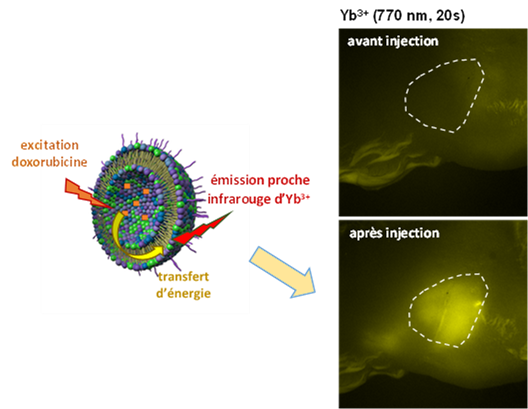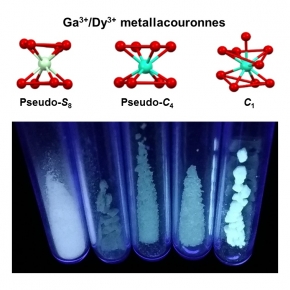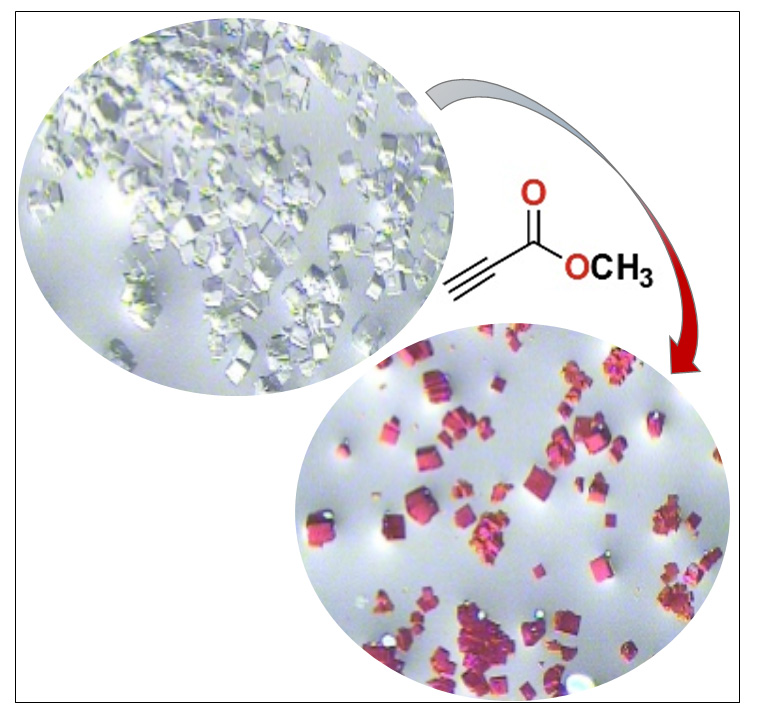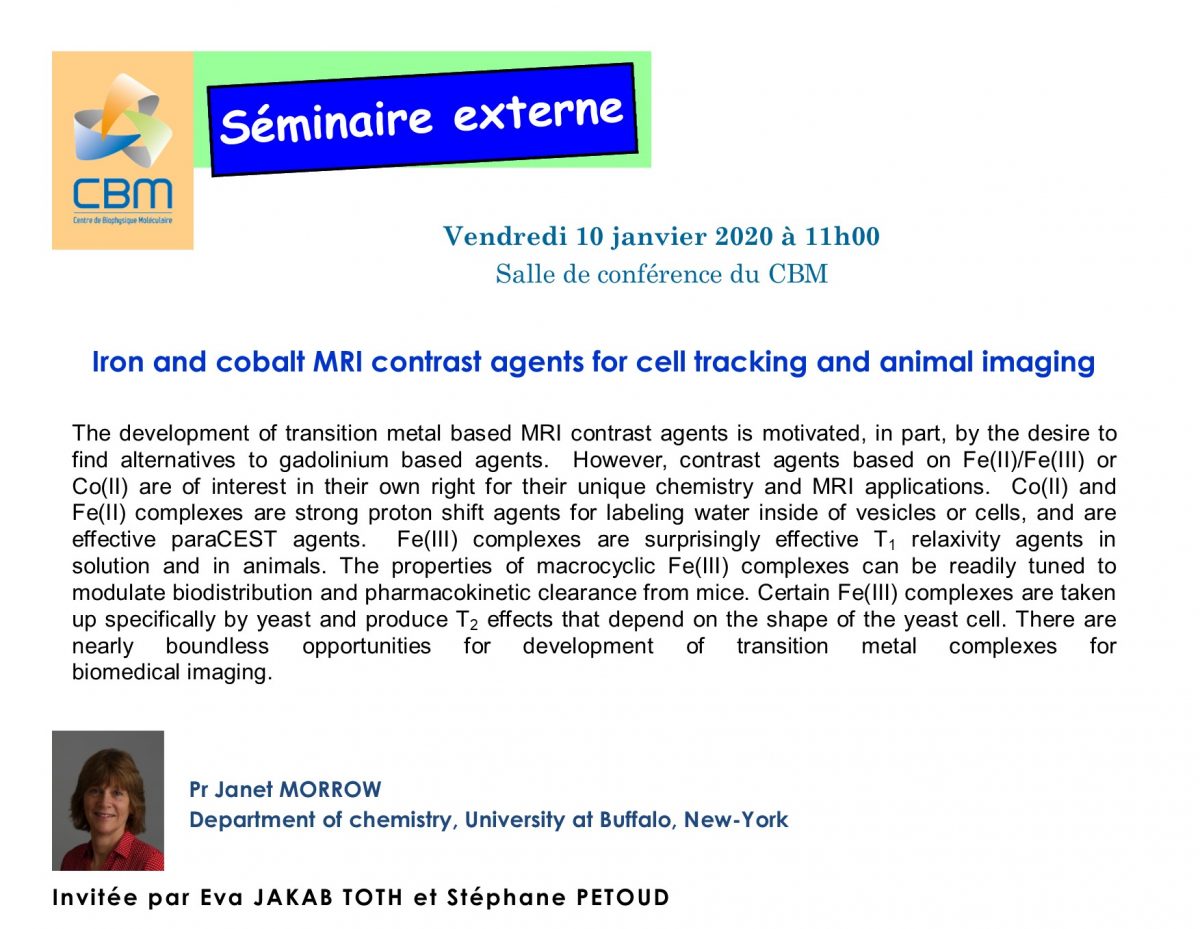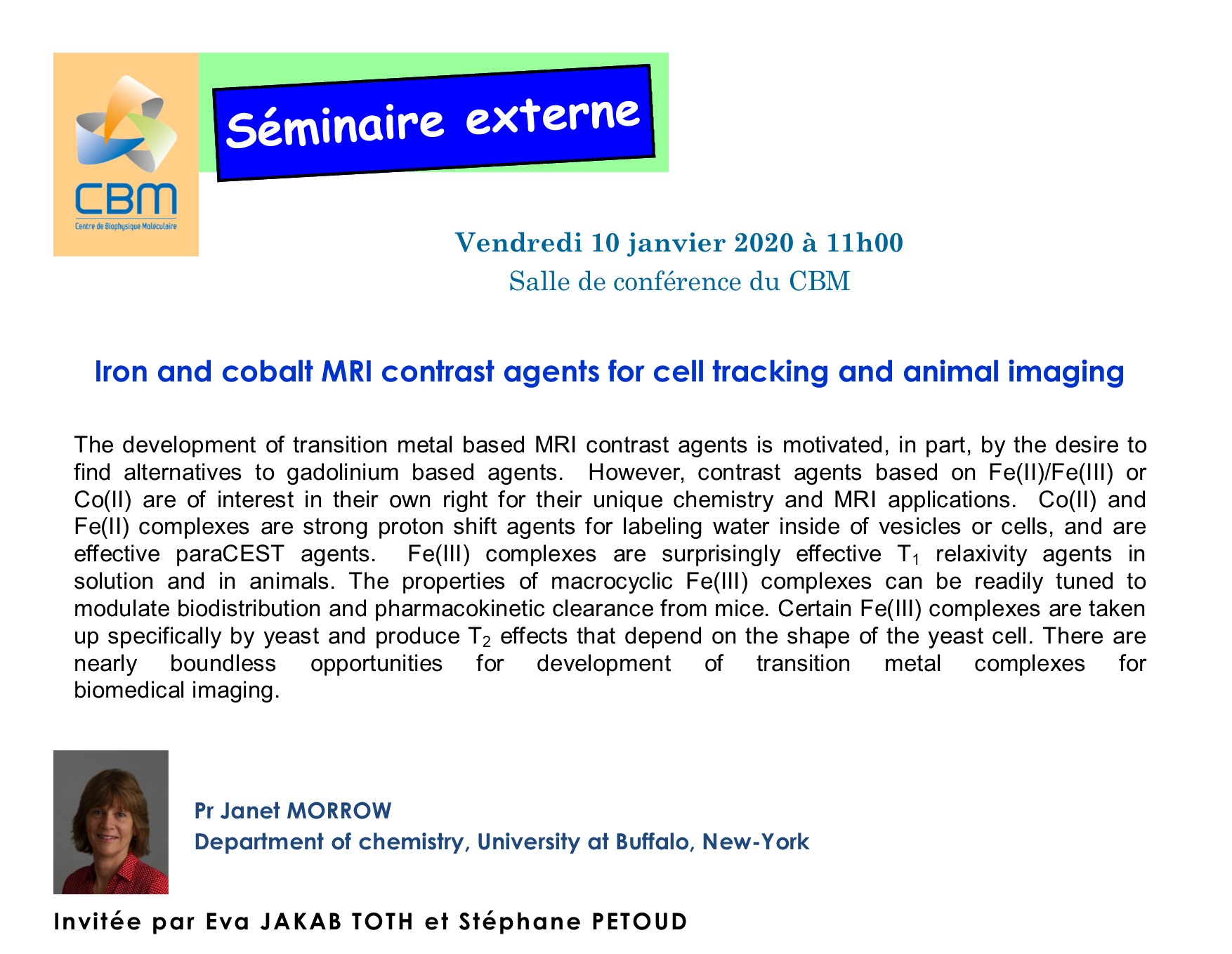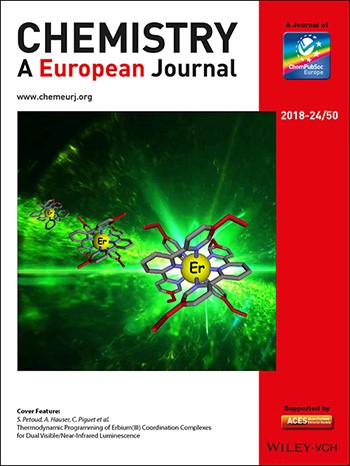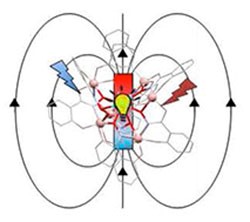Liposomes are nanocapsules widely used for the in vivo transport and delivery of therapeutic or diagnostic agents, or both. The therapeutic agent will only become active upon its release, thus sparing healthy tissues. The follow up of such release process is crucial to understand and control the drug action.
The previously reported approaches are based on optical imaging, using exclusively organic fluorophores or inorganic nanoparticles, co-encapsulated with the drug in the liposome.
The use of luminescent lanthanide complexes is an alternative which offers a number of advantages, including the capacity of those complexes to emit in the near infrared (NIR) region, enabling their detection in biological media.
The CBM research teams have developed an original nanocapsule : a liposome comprising an Ytterbium complex encapsulated with doxorubicin (anticancer agent). The NIR emission of the lanthanide complex is only observed when the drug is encapsulated. This NIR luminescence signal can therefore enable the direct follow-up, and in real time, of the integrity of the liposome, and can thus be used to detect the drug release.
An in vivo proof of concept was performed and the lanthanide luminescent signal could be detected in a mouse model of breast cancer.
Références de l'article :
Doxorubicin-sensitized Luminescence of NIR-emitting Ytterbium Liposomes: Towards Direct Monitoring of Drug Release,
Sara Lacerda, Anthony Delalande, Svetlana V. Eliseeva, Agnès Pallier, Célia S. Bonnet, Frédéric Szeremeta, Sandra Même, Chantal Pichon, Stéphane Petoud, Eva Toth
Angewandte Chemie Int. Ed. 13 août 2021 https://doi.org/10.1002/anie.202109408
See the news on CNRS Chemistry Institute site

